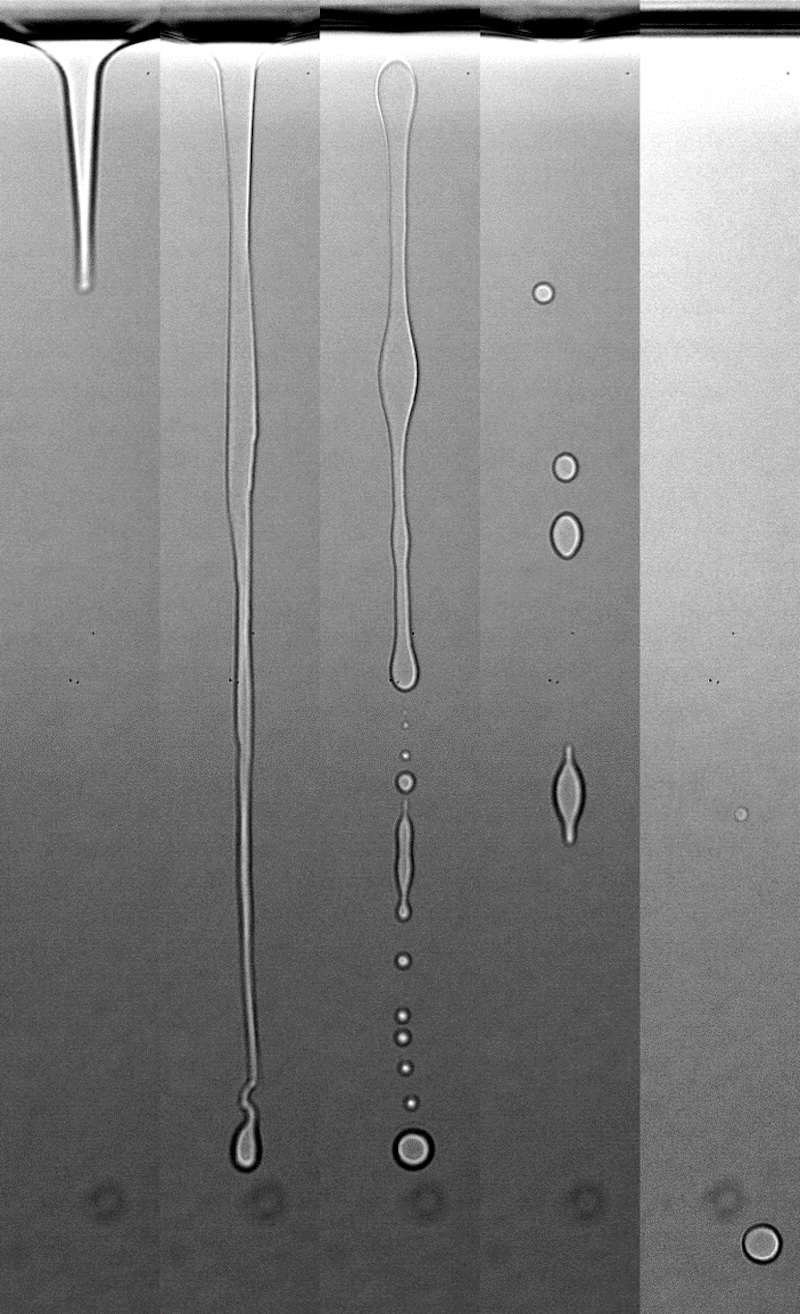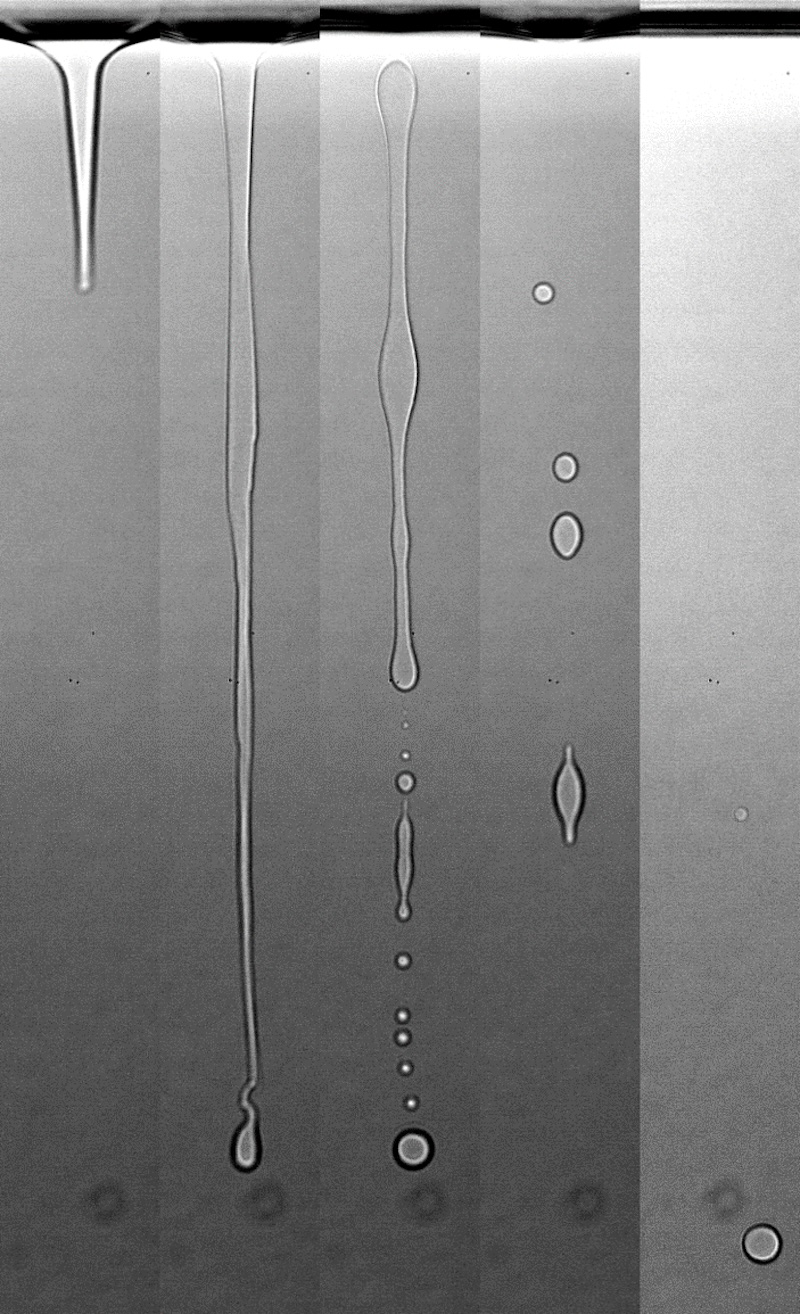Gravity Alters the Dynamics of a Phase Transition
What do magnets and decaf coffee have in common? Both involve physical systems that belong to the same “universality class.” Ferromagnetic materials are used to make magnets, and supercritical carbon dioxide extracts caffeine from coffee beans. At the critical point, when ferromagnetic and liquid–gas phase transitions occur, these two systems are described by the same critical exponents [1]. By identifying a system’s universality class, one can quantitatively characterize its behavior at the critical point without prior knowledge of microscopic details. Observing macroscopic properties suffices. However, taking that shortcut is often experimentally challenging, not least because many interesting systems are opaque to light. Now Raphael Saiseau of the University of Bordeaux in France and his collaborators have devised an ingenious experiment that enabled them not only to follow a phase transition but also to uncover the subtle and surprising effect of gravity on its dynamics [2].
When a homogeneous phase is suddenly brought into an out-of-equilibrium state across a critical point, the system enters a broken-symmetry phase. The ensuing phase separation progresses via the irreversible nucleation and expansion of domains of one phase into another. In these systems, the time needed to relax to thermodynamic equilibrium diverges such that equilibrium is never truly achieved. Instead, a distribution of domain sizes is produced with a typical length scale that grows over time. This phenomenon is called domain coarsening and results in scale-invariant domain growth.
In systems with a conserved number of constituents, domain growth can occur only when the different components within each phase are physically transported between the separating phases. For instance, some metallic alloys undergo so-called spinodal decomposition, a spontaneous separation into two phases. The transportation is controlled by the mass diffusion of one phase through the bulk phase and can be tracked using synchrotron-radiation-based microscopy [3].
A related phenomenon known as Ostwald ripening occurs in the later stage of domain coarsening. It consists of the growth of larger domains at the expense of the smaller ones. The recrystallization of water on the surface of ice cream is an everyday example of the phenomenon (Fig. 1). This “evaporation’’ process of the smallest spherical domains is driven by surface tension, and the radius of these domains is predicted to evolve with time as a power law whose index is 1/3 [4]. However, most experimental systems that undergo Ostwald ripening are opaque to light, preventing a direct observation of the decay dynamics at the scale of a single domain. Consequently, the power-law prediction has never been directly tested.
To overcome these limitations, Saiseau and his collaborators used a transparent pseudobinary liquid mixture to create a liquid interface that they could perturb using a laser beam. In conventional binary mixtures, an immiscible solute phase is mixed in a solvent phase. A pseudobinary liquid mixture can also separate into two immiscible phases, but each phase is made of multiple components. The researchers’ mixture had four different components: water, oil, surfactant, and cosurfactant. The team used these components to create a microemulsion made of 4-nm water-in-oil micelles diluted in an oil bath. The micelles constituted a low weight percentage in the oil solvent, and the resulting emulsion underwent a phase separation when heated above 38 °C. At that point, the liquid mixture divided into two phases, each with a distinct concentration of micelles.
In the presence of gravity, the fluid stratified: the lighter phase with a lower micelle concentration sat on top of the heavier phase with a higher micelle concentration. The resulting interface between the two phases had very low surface tension, which facilitated its manipulation. The researchers then focused a laser on the meniscus to produce an optical radiation pressure that was sufficient to overcome the Laplace pressure—that is, the net pressure difference between the inside and the outside of the meniscus. Thanks to this method, the interface inside a sealed container could be destabilized without perturbing the rest of the fluid.
When continuously pointed at the interface, the laser produced a thin liquid jet of the lighter phase that penetrated the heavier phase below. Like water dripping from a faucet, once the laser was turned off, the liquid stream became unstable and broke down into smaller droplets (Fig. 2). The laser beam could then be used again to optomechanically manipulate the droplets until a single drop formed at a chosen position inside the fluid column. The drop was thermodynamically out of equilibrium within the surrounding phase and immediately started evaporating via Ostwald ripening. The decay rate of the droplet’s radius could then be directly measured and compared with the predicted dynamics.
A thought experiment on this processes would have displayed the predicted decay rate. But the real-world experiment did not. When subjected to gravity, all fluids naturally tend to become stratified in density. In the Bordeaux experiment, this tendency resulted in an increase of solute concentration with depth, thereby introducing a dependence of the droplet decay rate on height within the column. To overcome this confounding issue, researchers have performed studies in the microgravity of space [5]. However, the direct observation of domain dynamics is impossible because samples in this type of study are frozen and analyzed after their return to Earth.
Instead of avoiding gravity, Saiseau and his collaborators incorporated its effect in a model. They then used this model to identify the conditions under which the effect of the solute stratification on the droplet decay becomes negligible. According to the model, the conditions turned out to be three in number: the droplet had to be small compared with the gravitational capillary length, it had to be far from criticality, and it had to be positioned close to the meniscus separating the two phases. The researchers demonstrated that only when those conditions were met could the 1/3 decay exponent predicted by theory be recovered.
The Bordeaux study shows that evaporation–condensation mechanisms can be far more complex than the universal scaling laws predicted by theory. The presence of gravity introduces additional forces competing with capillary forces and results in richer dynamics. I anticipate that integrating the effect of gravitation into phase-transition dynamics will bring new insights to domain-coarsening phenomena in soft matter physics and materials science.
References
- N. Goldenfeld, Lectures on Phase Transitions and the Renormalization Group, Frontiers in Physics Vol. 85 (CRC Press, Boca Raton, FL, 2019)[Amazon][WorldCat].
- R. Saiseau et al., “Decay dynamics of a single spherical domain in near-critical phase-separated conditions,” Phys. Rev. Lett. 133, 018201 (2024).
- L. K. Aagesen et al., “Universality and self-similarity in pinch-off of rods by bulk diffusion,” Nat. Phys. 6, 796 (2010).
- A.J. Bray, “Theory of phase-ordering kinetics,” Adv. Phys. 43, 357 (1994).
- J. Alkemper et al., “Dynamics of late-stage phase separation: A test of theory,” Phys. Rev. Lett. 82, 2725 (1999).







